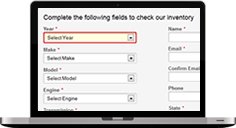The Engine-Less Soapbox Derby
What exactly is a soapbox derby? It is a race (typically for kids from 11 to 15 years of age) where the participants make their own motor-less cars and race them down an inclined roadway or raceway. The vehicles are made for only one person with only one seat. This type of racing excites children both as they soar down the hill at incredible speeds as well as during the vehicle creation process. Putting together their own vehicle provides the children with a sense of pride and accomplishment.
The concept of a soapbox derby began with a man named “Myron E. Scott” in 1933. He happened upon three boys who were racing homemade, engine-less cars down a hill in his local area. Scott decided to turn this activity into a race with a prize for the winner. He asked the boys to come back in one week along with some of their friends. Nineteen young, male racers showed up to compete with their homemade cars the following week. One of the cars, which was not the winner of the race, became the symbol for the soapbox derby. The car was black with a white number seven painted on the side. Scott had his picture taken with the driver and creator of the car, Robert Gravett, along with the car itself. With the success of this first soapbox derby Scott decided to make the competition on a much grander scale. He was a photographer for the Dayton Daily News and asked his editor if he could promote a race through the newspaper. The request was accepted and he received $200 from the paper in order to put on a bigger derby in Dayton. This race took place on August 19, 1933, and had 362 competitors. The cars were created from items such as fruit crates, tin sheets and wood scraps as well as wheels from baby-buggies or roller skates. The local police believed that about 40,000 people came to watch this new and thrilling event on that day.
Since the time of its inception the soapbox derby has become a more regulated event. The cars are still engine-less but tend to have plastic or fiberglass shells, floorboards and wheels that are standardized along with precision ball bearings. Many soapbox derby cars are now created from kits. A ramp at the top of the racing hill is where the races begin. Advanced timing systems are used throughout the world to decide which contestant wins the race. These systems are able to measure the difference between the finishing time of participants to one-thousandth of a second. A race can be a double elimination or a single elimination. With a single elimination if the racer loses one heat he is done. The annual World Championship in Akron, Ohio is a single elimination soapbox derby race. It uses photography which is overhead and set off by a timing system in order to determine the winner of every race. Yet the majority of races today are double elimination races. When the racer loses one heat he enters the “Challenger’s Bracket” where it is possible to win his way to the top. There are three racing divisions now in the majority of local races as well as the renown All-American competition including: the Stock, the Super Stock and the Masters. These race types vary according to the experience level of participants. There are also different events such as “The Ultimate Speed Challenge” where the goal is to be very creative with your car in order to attain never before achieved speeds. In this event three runs are used and the racers are timed on each run once. The overall fastest run determines the winner.
Soapbox derby vehicles all have three main parts in common which include: the body, the drivetrain and the chassis. The body’s job is to protect the car and make it pleasing to the eye. The drivetrain includes the wheels, brakes and steering system while the chassis holds all the parts together. A pull wagon is an excellent example of an item you can use to create your soapbox derby car with. Assembling your derby car begins with the drivetrain. Start with the axle system and the wheels and then put in the brakes. It is also important to include a seatbelt. Building a rollcage is a good idea to help protect the racer in case the car rolls over. Once you have the vehicle assembled you can truly express yourself with the painting and decorating of the car. Now you are ready to compete in a race.
The following links will provide you with more in-depth information on the thrilling adventure of soapbox derby racing.
Written by: Milan Alcot



